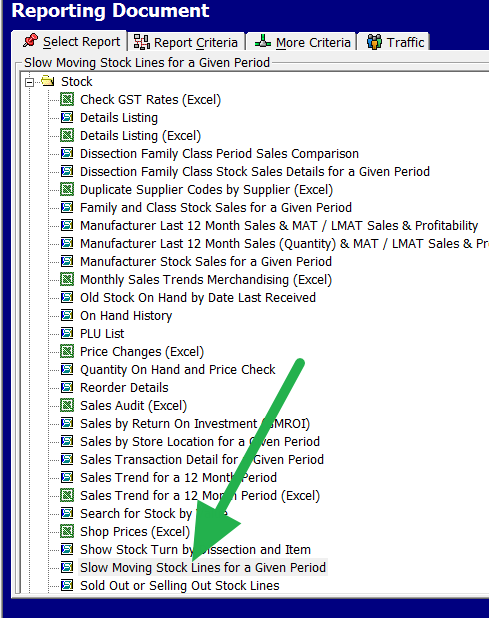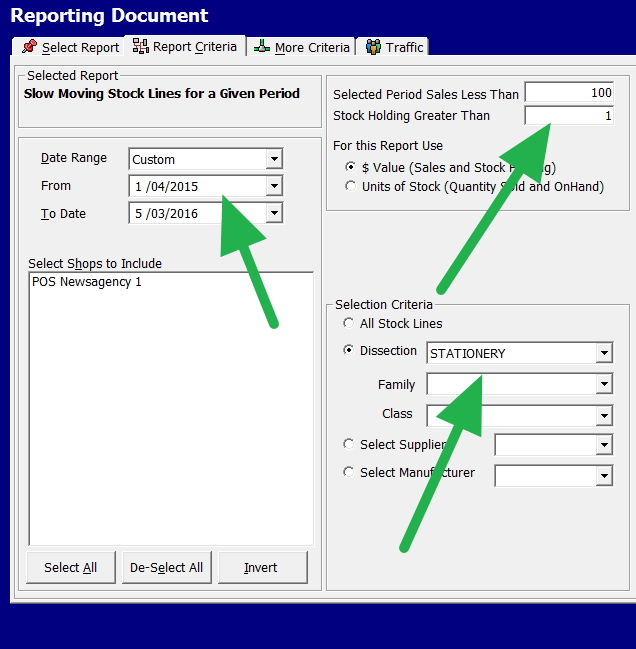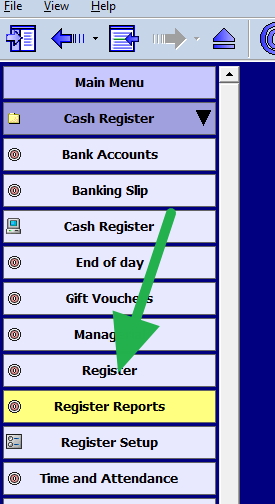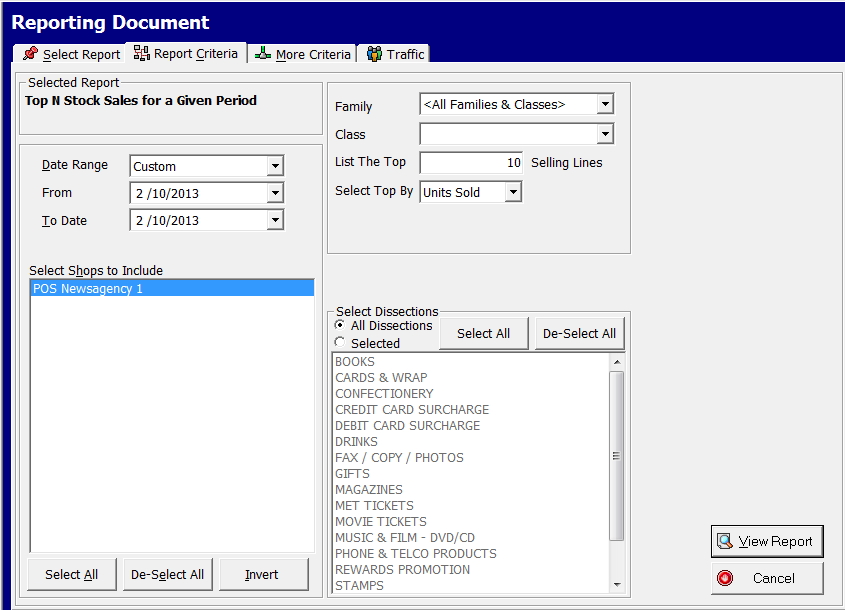Today, we follow up on yesterday's blog post, in which I discussed your best sellers. I suggest you read it.
In many shops I go into, I see old stock that did not budge. It is a common problem that can seriously impact your bottom line. Let's explore how you can deal with this slow-moving stock. It would free up valuable space for your best performers.
Why Tackle Slow-Moving Stock?
Before we get into the nitty-gritty, let's discuss why this matters. Slow-moving stock is like a guest who's overstayed their welcome - they're taking up space, costing you money, and contributing little in return. By addressing this issue, you can:
- Free up valuable shelf space
- Improve cash flow
- Reduce storage costs
- Make room for more profitable items
Identifying the Culprits
Step 1: Run a Slow-Moving Stock Report
First things first, let's find out what's not selling. Here's how:
- Open your POS system
- Navigate to Register reports > Stock > Slow moving Stock lines
- Set your parameters (e.g., stationery department, last 12 months, sales under $100)
When I did this recently for a client, we uncovered a whopping $80,000 worth of slow-moving stock. That's a lot of capital tied up in items that aren't pulling their weight!

Now call it up here

As you can see, I have been looking at the stationery department for over twelve months for anything I have sold for less than $100 and am now stocking.
Now, out pops a report, in this case, 81 pages of detailed information on all the items that match this condition; we have almost $80,000 worth of worthless stock.
Check them out, remove what you do not want to keep, and put it in your sales area.
Once you've got this done
Report your top-selling stock items and look at those selling well. A rule of thumb in retail is that doubling the space of an item increases its sales by 50%. The idea here is to replace the marginal items with those that sell well.
Go to Register reports.

Now select "Top N Stock Sales for a Given Period."

Now, the following comes up.
Now, put an appropriate period. The default here of a day is not enough

Note: I just wanted a quick report for illustration.
Step 2: Analyse the Results
Once you've got your report, it's time to roll up your sleeves and dig in. Go through each item and ask yourself:
- Is this still relevant to my business?
- Is there a reason it's not selling (poor placement, pricing issues)?
- Can it be bundled with faster-moving items?
Making Room for the Stars
Now that you've identified your slow movers, it's time to give your top performers the spotlight they deserve.
Step 1: Identify Your Best Sellers
- Go back to your POS system
- Navigate to Register reports
- Select "Top N Stock Sales for a Given Period"
- Choose a meaningful timeframe (I recommend at least a month)
Step 2: Optimise Your Layout
Here's a little retail secret I've learned over the years: doubling the space for a product can increase its sales by up to 50%. With this in mind, consider:
- Giving more prominent placement to your top sellers
- Reducing space for slower-moving items
- Ensuring your layout guides customers towards your best performers
Putting It All Together
Remember, your store space is valuable real estate. Every square metre should be working hard for you. Regularly reviewing your stock performance and adjusting your layout accordingly can significantly boost your profitability.
This process isn't a one-and-done deal. Make it a habit to run these reports and review your layout quarterly. Your stock mix and customer preferences will change, and your store should evolve.
The Bottom Line
Don't let slow-moving stock weigh you down. By identifying these items and making space for your stars, you're not just clearing shelves but setting your business up for success. So, fire up that POS system, run those reports, and start optimising. Your future self (and your bank account) will thank you!


